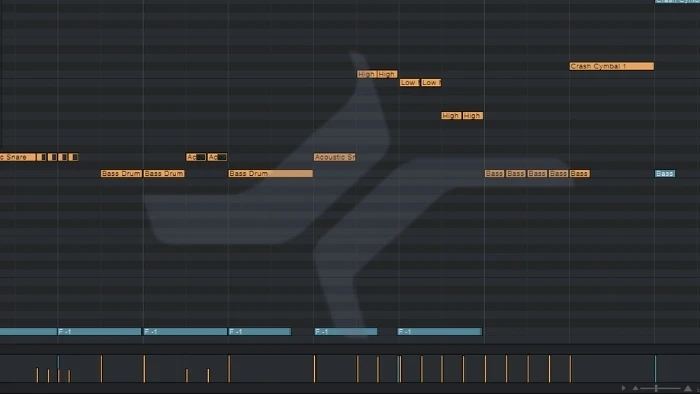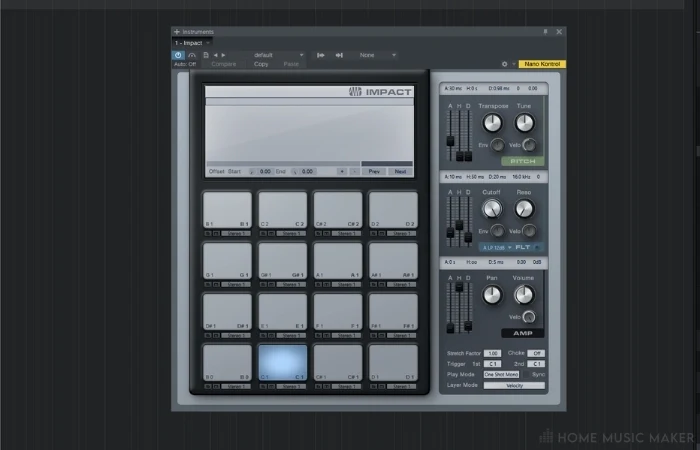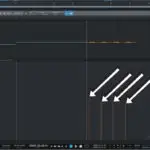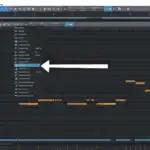In Studio One, there are two ways to program drums – either by manually writing notes with your mouse or through an external MIDI controller like a MIDI keyboard, drum pad, or an electronic drum kit.
Programming Drums In Studio One
Programing drums is an essential skill for any producer, but even more so for all bedroom folks who have to do everything independently.
A well-programmed drum part lifts your whole production to the next level.
In this article, I’ll discuss all the ways you can program drums in Studio One and offer some practical advice on how to step up your drum programming skills.

How To Get Started?
First of all, we need some drum samples.
If you own a Pro or Artist version of Studio One, your Impact instrument will come loaded with many drum kits.

Find Impact under the Browse section in the bottom right corner and drag it in the project window, as seen below.
Studio One will automatically create an instrument track and properly rout it.
Once you open Impact, you’ll find a preset bar at the top of the window where you can choose various kits.
If none of the kits fit your needs, you can customize your own by simply dragging any drum sample to any pad.
A critical thing to bear in mind is a note to which you’re assigning your samples. At the bottom of each pad, you’ll see a note and a corresponding octave right next to it.
So, for example, if you drop your kick sample on C1, that is the place in the piano roll where a midi note will trigger this particular sample.
Alternatively, you can choose any other drum VST plugin out there.
Currently, there are numerous great-sounding drum VST’s. Anything from Getgood Drum and Addictive Drum to Superior Drummer are all excellent choices.
So, you’ve loaded your instrument track, drum VST, selected a preset, and you’re ready to start writing some MIDI to it.
Here’s how to do it.
Writing MIDI Notes With Your Mouse
Using your mouse is probably the most widely used method of programming drums.
You input MIDI notes right in the MIDI editor using your mouse manually.
While it may feel a bit slow and clunky initially, once you get the hang of it, you’ll fly over the editor and program drums with incredible speed.
Before we do that, we need to create an empty MIDI block.
We can do that by double-clicking the project area on the MIDI track and, after that, resize the block according to the song or beat length.
Double-clicking the empty MIDI event will open your editor.
You’ll see a piano roll on the left, an essential tool when writing MIDI with your mouse.
Studio One allows you to have two points of view:
- A standard piano roll
- Individual drum pieces labeling.
You can choose whichever one visually works better for you.
I personally always use piano roll and a GM (General MIDI) drum mapping as it’s universal to every situation and every DAW. However, you are free to create your own custom drum maps.
Once in the editor, right-click and choose the Draw Tool.
Now you’re ready to start writing MIDI notes for your drums, as seen here:
Drum MIDI Mapping
Here are some of the more usual mapping setups:
- C1 usually stands for kick drum
- D1 for snare
- F#1 and Bb1 for closed and open hi-hat
- C#2 for a crash cymbal.
Toms are usually placed at F1, G1, and A1.
These are susceptible to change if you decide on a different layout, but in the meantime, but it’s a great place to start.
With your draw tool, left-click on the grid following the line of the note you want to write.
Drum Bars
Numbers dividing the bars are a great way of navigating through your beats.
For example – the kick is usually placed on the first bar of the beat while the snare is on the 2nd and 4th quarters.
Of course, this is just an example of a typical 4/4 beat.
Drum Editor
For an even more simplified drum programming, you can switch to drum editor at the top left corner of the editor.
Instead of lines and piano roll, you’ll have triangles and each drum articulation separately displayed.
This drum editor stems from Cubase and is a fantastic way of writing MIDI for drum parts. Everything feels smoother and more accessible.
PrograMming Drums With External MIDI Devices
The other way of programming drums is by using a MIDI device.
It can be anything from a MIDI keyboard to an electric drum kit.
This way of programming drums is excellent if you want to perform your drum parts. You can also choose not to quantize notes and keep more of a loose ‘real’ feel if that’s what you’re after.
Whatever works on the piano roll will work on your keyboard too.
For other devices like drum pads and e-kits, you’ll have to set up the MIDI routing for your particular device properly.
To write MIDI this way, press the general record button while ensuring that recording is enabled on the instrument track and play your drum parts through a MIDI controller. Afterward, you can quantize your notes to the grid by pressing Q.
Follow the video below.
Tips On Writing Better Drum Parts
If you want to write a better drum pattern, it’s advisable to become a better drummer yourself.
This doesn’t mean being a drummer but getting to know how a good drummer thinks about his instrument.
I’d suggest watching plenty of drum playthroughs, drummer interviews, and listening to various drummers that you like. After a while, you’ll notice that your ideas about drum parts will become more exciting and varied.
Related Questions
How to program drums to sound more like a real thing?

It’s all about the velocity. It’s essential to make every hit unique, especially in delicate hi-hat parts.
Set your velocity levels for each note to be slightly different from each other, and try not to quantize every single note to the grid.
You’ll see an improvement straight away.
What is the best drum library out there?
I personally use a couple, as each has its pros and cons. Superior Drummer and GGD are my go-to ones.
Which method is better, manual input or recording MIDI notes?
I’d say that recording MIDI is better if you are a drummer and are used to performing your drum parts.
Otherwise, I’d recommend writing it in the editor with your mouse.
How can you quickly loosen up a quantized drum part?

A great way to do that in Studio One is by selecting the notes you want to edit and clicking Humanize, found at the top of the editor.
Are you having problems with clipping in Studio One?
Check out our guide on how to fix it HERE.

 Want to connect with other music producers for help and guidance?
Want to connect with other music producers for help and guidance?